Unraveling the mysteries of birds vol.1
Let's look for bird feathers!
Do your own research too! Uncover the feather secrets of a variety of birds.
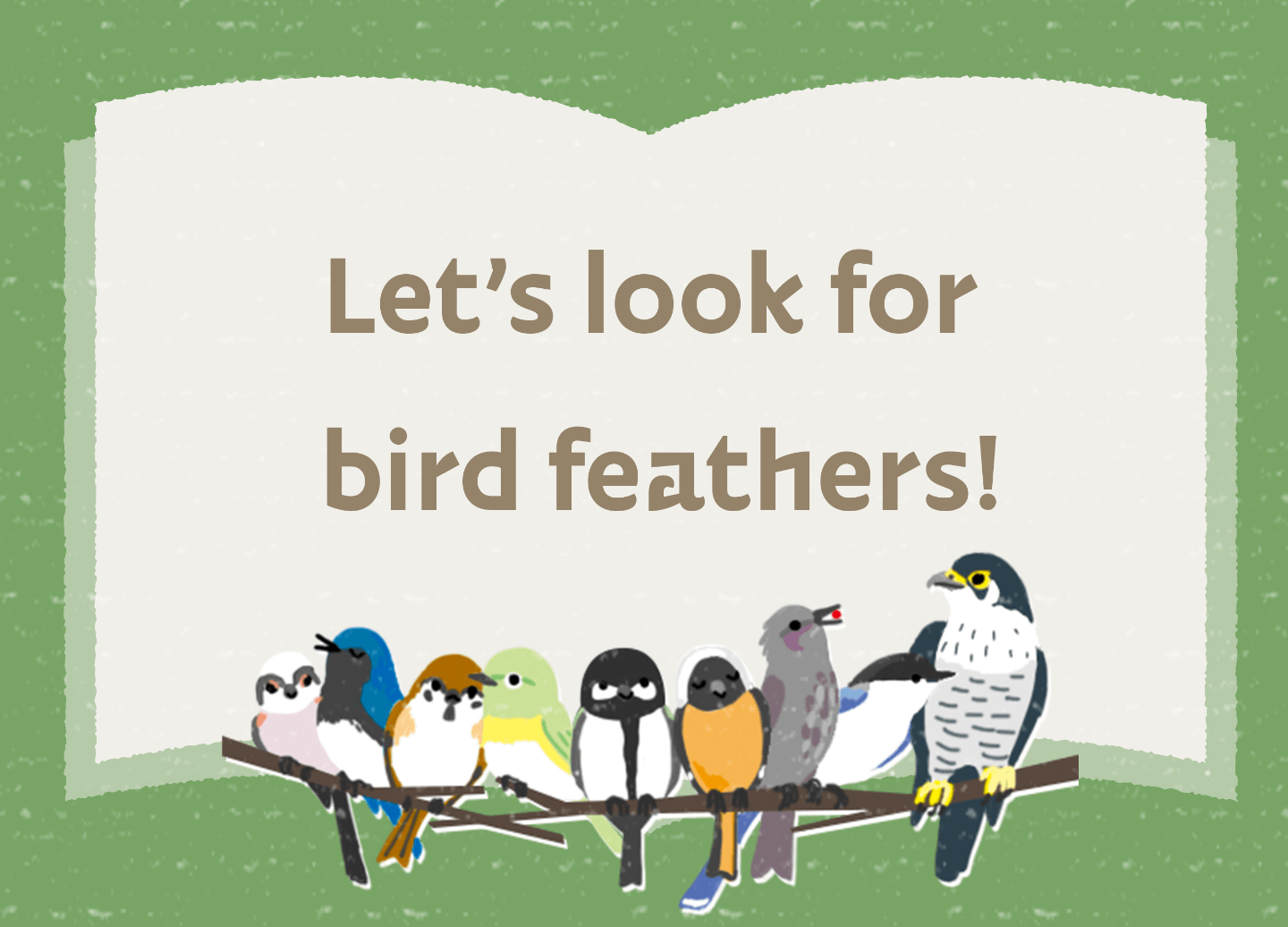
Do your own research too! Uncover the feather secrets of a variety of birds.

Did you know that loose bird feathers are plentiful in summer?
You might see small or big feathers, dark or colorful feathers, or even some unusual looking feathers.
Try to find a variety of feathers!

Challenge #1
Summer is the season when you will find the most feathers on the ground. If you pay attention as you walk, you can find them in the schoolyard, parks, the garden or along the road. The color and shape of feathers vary depending on the species of bird and where it was raised. Try to find a variety of feathers when you are out walking. It would be a good idea to record in a notebook the color, size and shape of the feathers that you find.

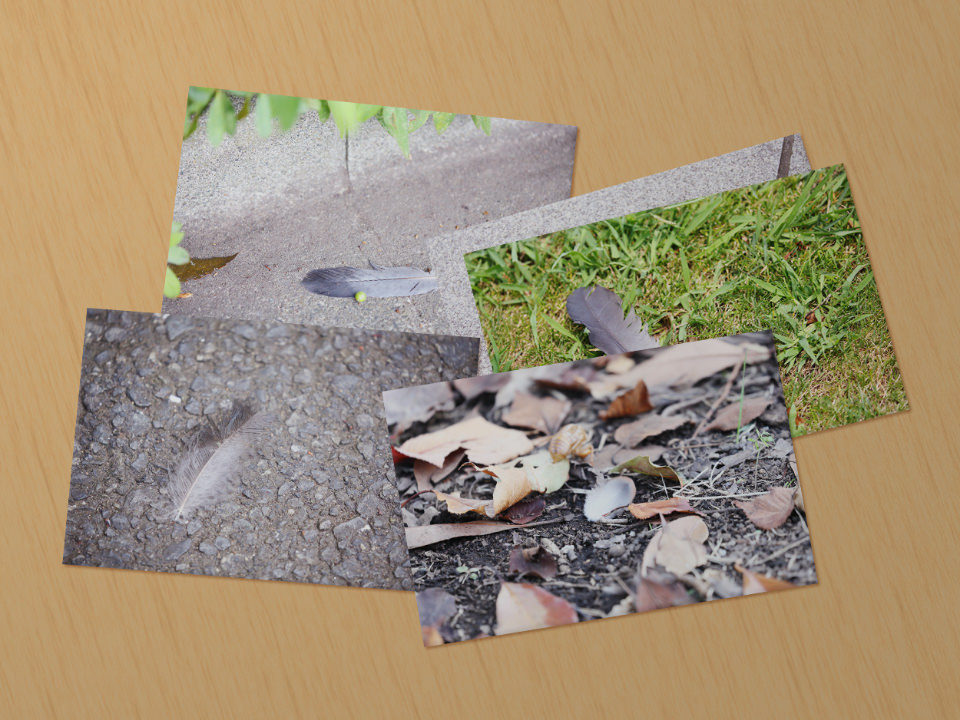
The answer is because that is the time when birds change their feathers, or molt.
Male and female birds that become couples in the spring make a nest and raise their chicks until the summer. When the busy chick-rearing period ends, many birds migrate, making the long journey to a warmer place in the fall, and also those birds that do not,
they have to tough out the cold winter. Since a bird's feathers are damaged and tattered after the hard labor of raising chicks, it must replace them before it migrates or the harsh winter arrives.
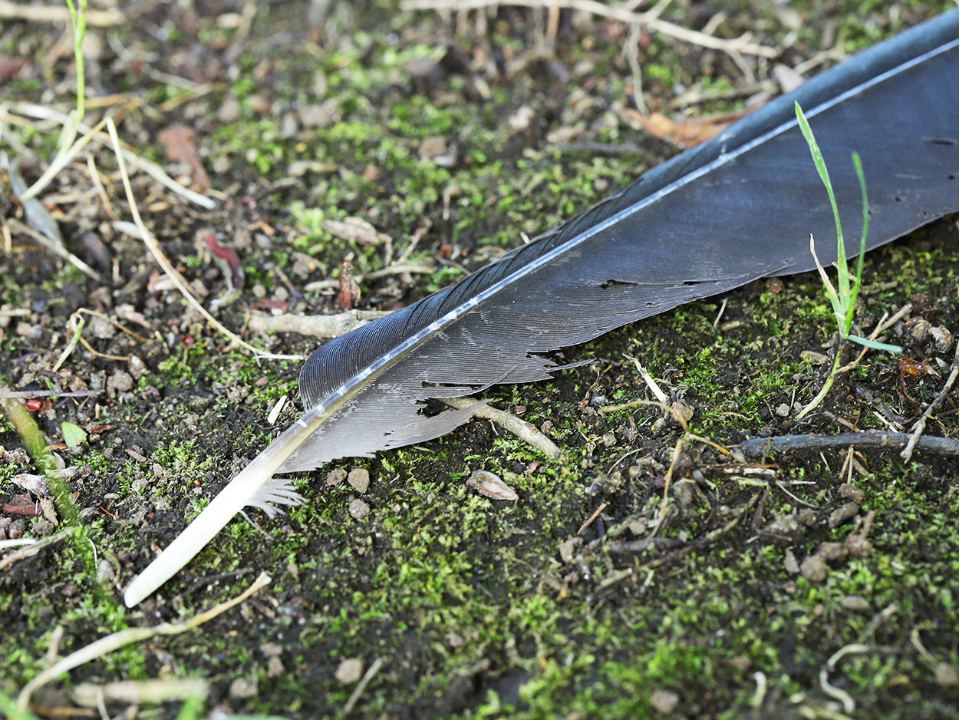
Actually, it is not known for sure. The number of feathers counted on a Blue-and-white Flycatcher, which is about the same size as a sparrow, is 3,114, while the number counted on a White-bellied Green Pigeon, which is a member of the pigeon family, is 4,715. Crows, which are larger than pigeons, might have about 10,000 feathers then, right? Since a bird cannot fly if it loses many feathers all at once and it will not be able to maintain its body temperature either, it grows and replaces its feathers slowly over the course of 1-2 months. Over the summer, many birds are shedding thousands of feathers in the city, in the mountains, and by the water.
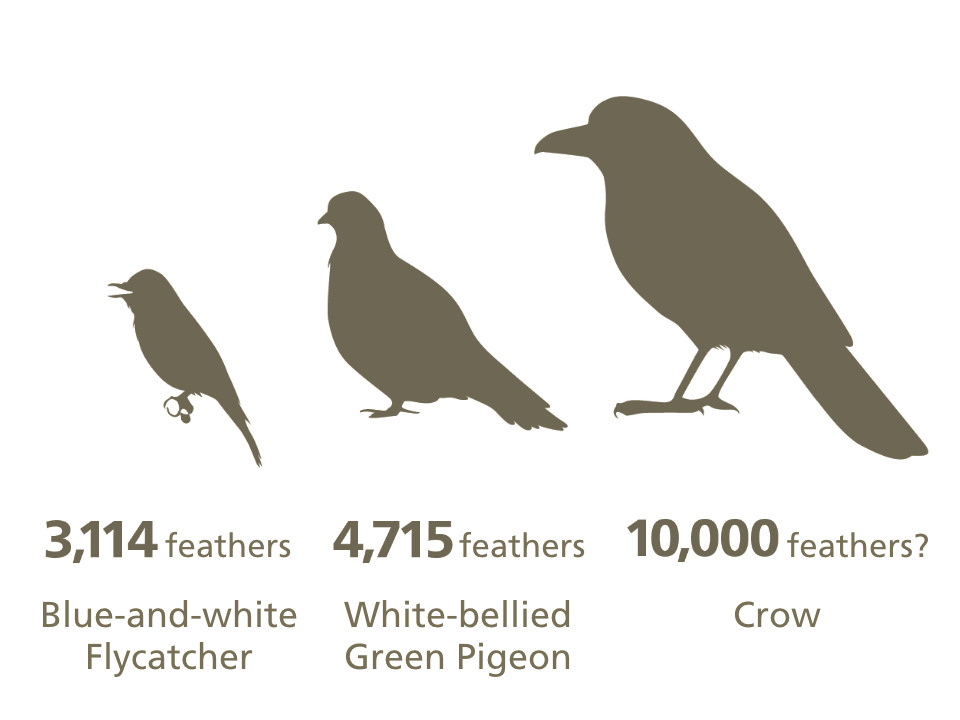

Challenge #2
When you find a feather, pick it up and look at it closely. If it has a shaft in the center, called a “quill,” it is a “contour feather.” Birds have a variety of contour feathers; large, long feathers with a stiff shaft are “flight feathers,” wing feathers used for flying, or “tail feathers.” By contrast, small, short feathers with a soft shaft are most often “body feathers.” Although body feathers are not used for flight they serve to protect the body, growing in large number on the head, breast, belly, and back. On the other hand, there are also feathers that are simply a swirl of soft barbs without a shaft. These are “down” feathers used as insulating material in jackets and quilts. Down grows under the contour feathers and keeps the bird's body warm.
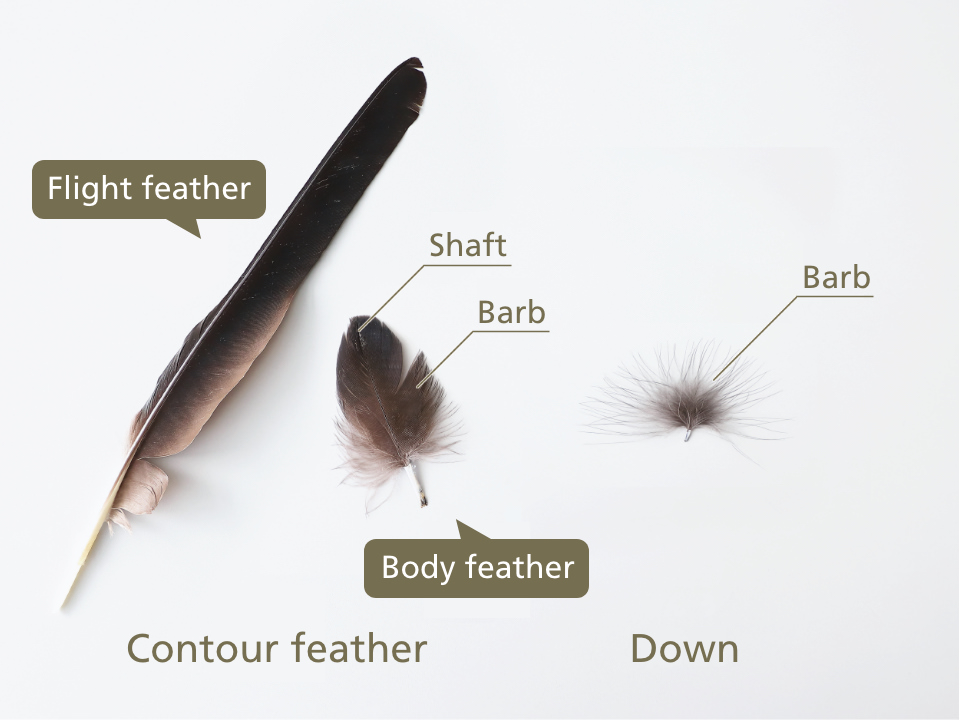
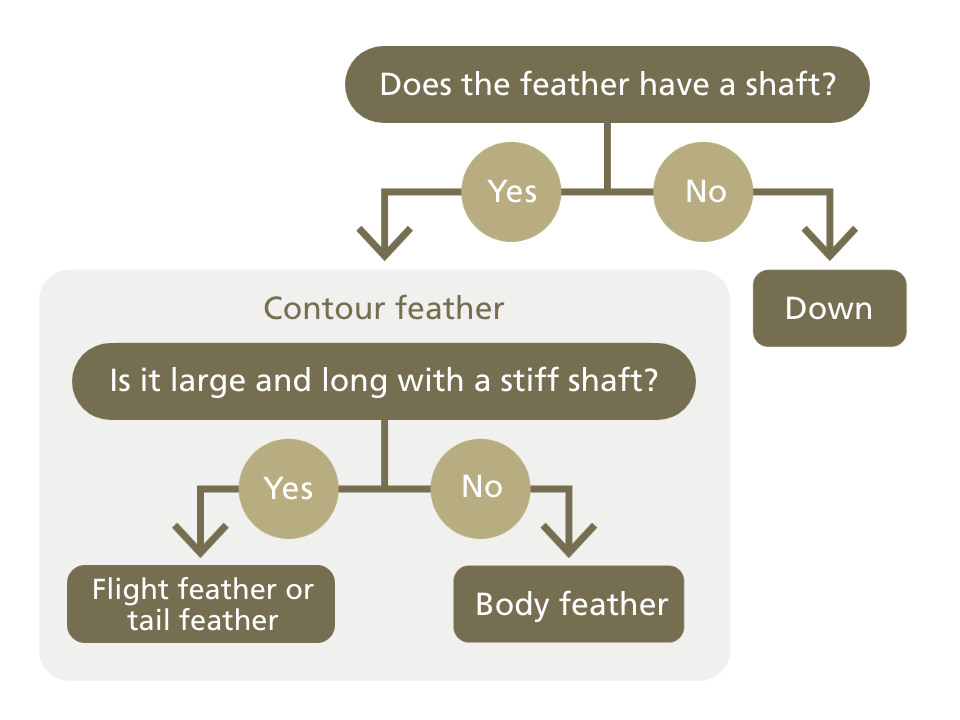
You can guess the size of the bird from the length of the feather. Measuring the length of a flight feather, 10-30 cm would be the size of a crow, 7-15 cm would be size of a pigeon, and a few centimeters would be the size of a sparrow. The shaft is hollow inside like a tunnel, so when you pick it up you should notice how weightlessly light even a large feather feels. Though light, it has a strong construction, and is flexible toward the tip.
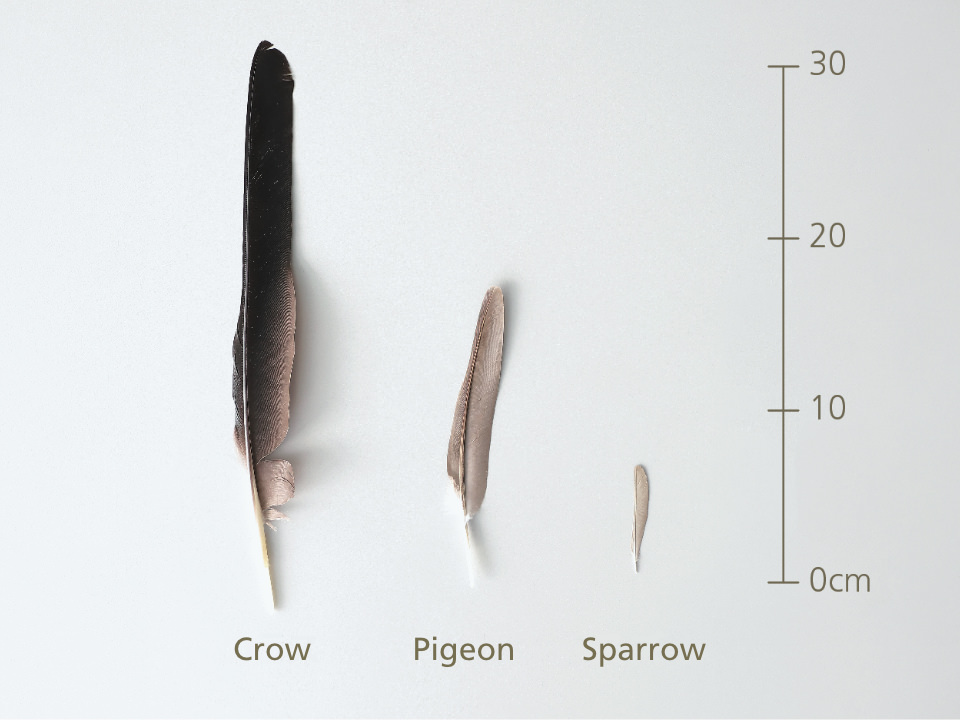
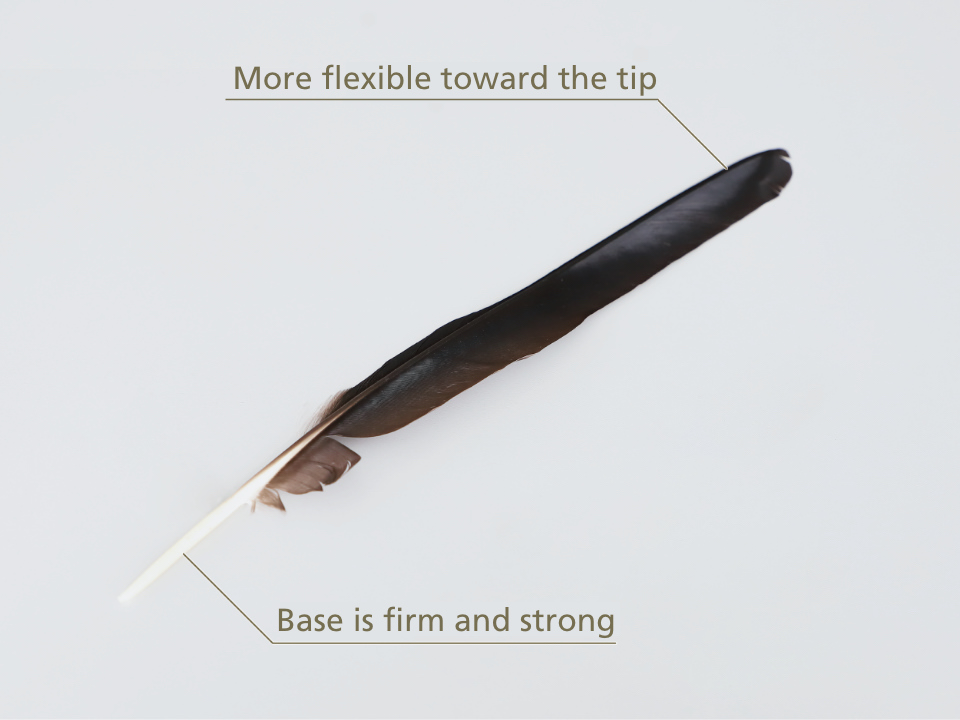
Because it has many fine hooks that hold it firmly together. Contour feathers have a series of fine “barbs” that spread out on each side of the central shaft. Extending out from the barbs lengthwise are even finer “barbules.” Barbules have hooks that catch and hold barbules opposite them to form a flat vane, or web. Looking through your binoculars the opposite way as a magnifying glass, you can see their appearance as illustrated in the diagram. Even if its feathers are tattered and frayed, a bird can use its bill to smooth and reposition them because the hooks catch each other again. Incidentally, no one has ever counted precisely the number of barbs and barbules in a single feather. However, it is said that the number of hooks in the flight feather of a pigeon is several hundred thousand.
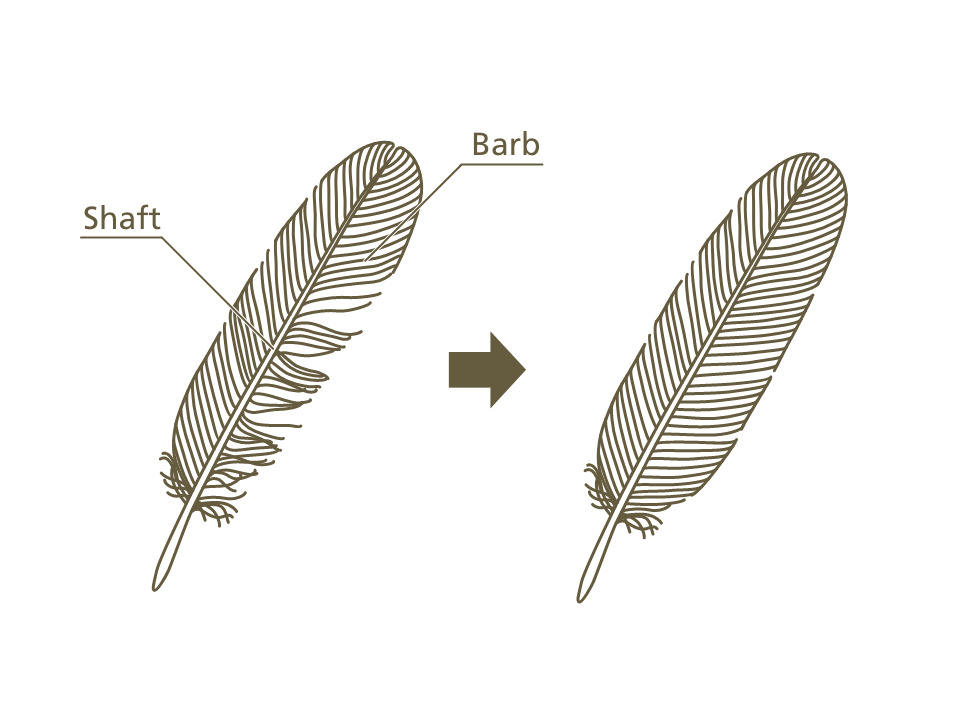

Since their fluffy feathers provide insulation and help maintain a high body temperature, birds are okay even if it becomes a little cold.
In the animal world there are homeothermic animals and heterothermic animals. Heterothermic animals allow their body temperature to fluctuate according to the surrounding environment,
whereas homeothermic animals such as birds and mammals always maintain a stable internal body temperature. Birds have a higher body temperature than humans, usually higher than 40 degrees Celsius (105 degrees Fahrenheit).
Feathers repel water and not only protect the body but also help maintain a stable body temperature. Small birds weighing less than 10 grams have even been known to survive temperatures as low as -35 degrees Celsius (-31 degrees Fahrenheit).


Birds have feathers, mammals such as humans have hair or fur, and reptiles such as snakes have scales. Actually, we know that feathers, hair, fur, and scales are all made from the same protein, keratin. And, it is thought that since all of them are shed and replaced, the hair and fur of mammals and the scales of reptiles are the equivalent of feathers. It is said that birds and mammals evolved thousands of years ago from a common ancestor with scales, so it could perhaps be said that the scales evolved into feathers on birds and fur on mammals.
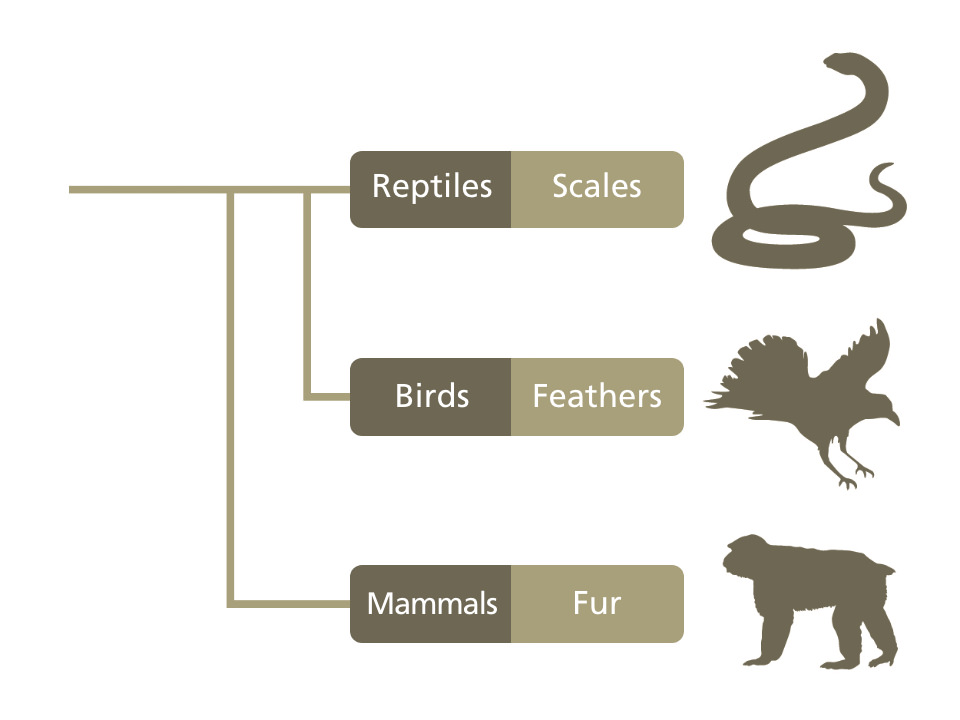

Have you gotten a sense of the awesomeness of feathers?
By just carefully examining one, you can find out so many things, such as the type of feather it is and what kind of bird it came from.
Try to find different feathers and get to know their characteristics and what you can learn from them!
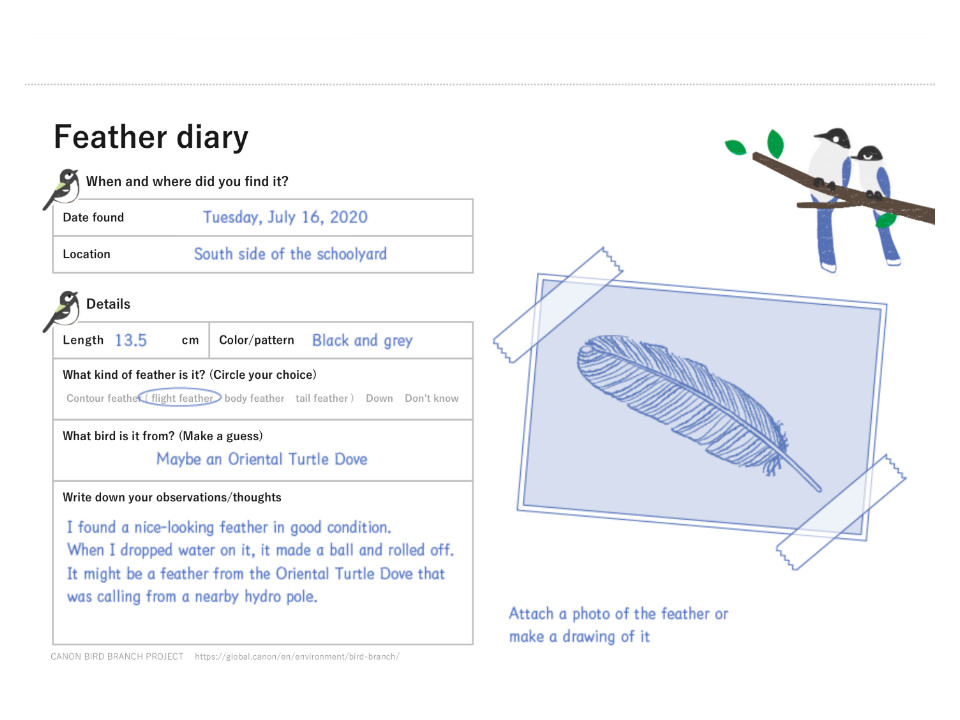
writer
Wild Bird Society of Japan
In 1981, appointed Chief Ranger of Lake Utonai Sanctuary in Hokkaido, the first sanctuary designated by the Wild Bird Society of Japan.
Currently Consultant of the Wild Bird Society of Japan. Travels throughout Japan and the world giving lectures on wild birds, nature observation and environmental education. More than 450,000 copies of a wild bird field guide for which he provided commentary have been published.
